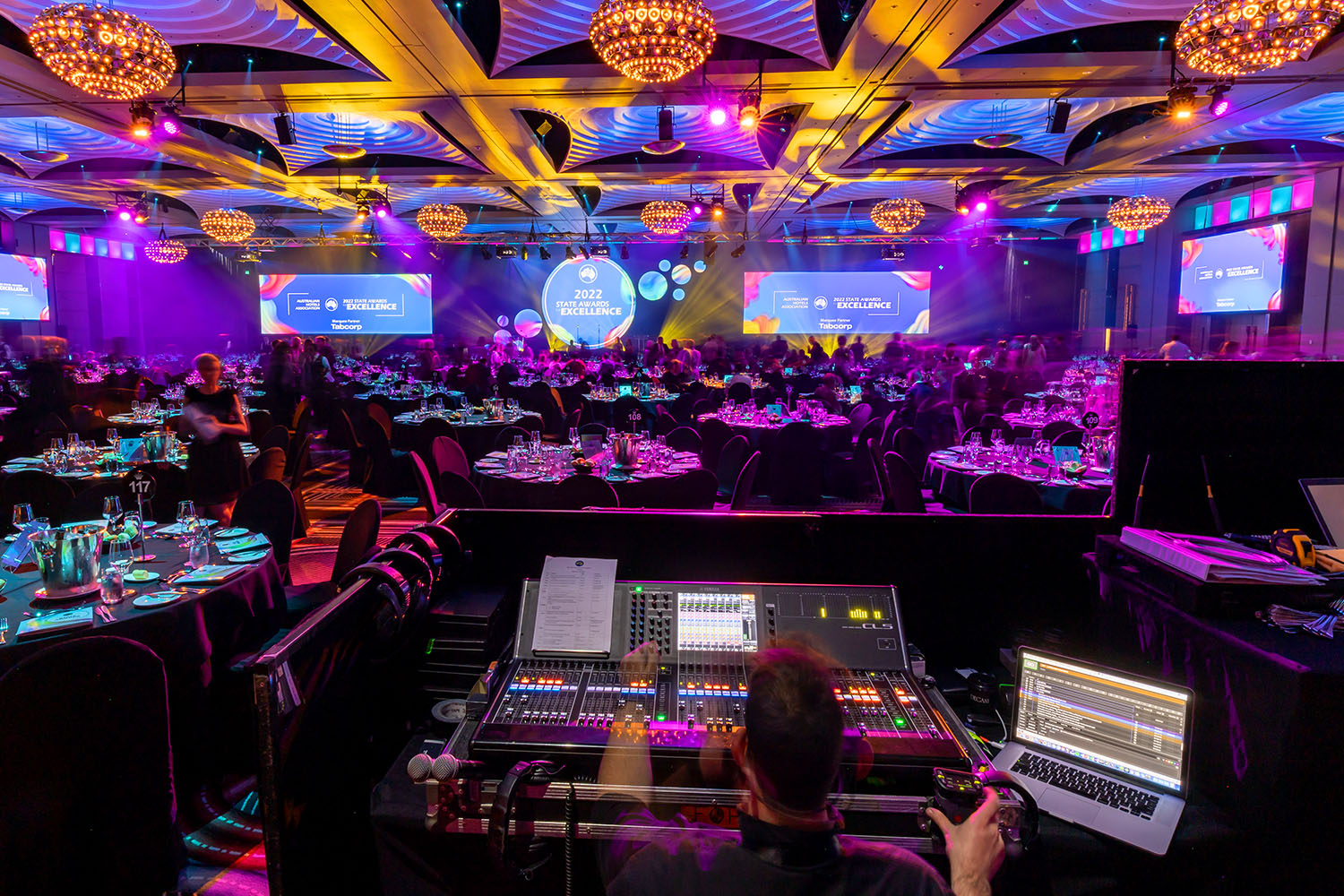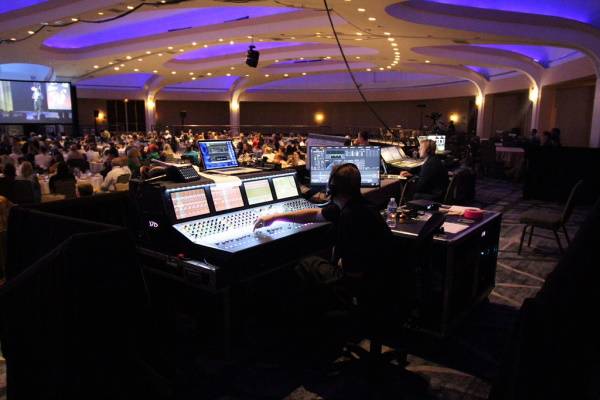Boost Audience Interaction with Live Event Audio Visual Production Techniques
Boost Audience Interaction with Live Event Audio Visual Production Techniques
Blog Article
Comprehending the Process of Live Event Sound Visual Production
The details of online event audio aesthetic manufacturing demand a blend of technological know-how and calculated preparation. Each phase, from the first concept to the last implementation, calls for a collaborative effort amongst numerous professionals, including audio engineers and lights developers. Understanding the roles and obligations within this environment is crucial for attaining a seamless experience. As we explore the important parts that contribute to a successful occasion, it becomes apparent that the foundation depends on both preparation and versatility. What takes place when unanticipated difficulties develop, and how do they improve the manufacturing landscape?
The Value of Preparation
Reliable planning is necessary for the success of any kind of real-time event audio visual production. A well-structured strategy serves as the foundation, directing every facet of the occasion from fertilization to implementation.
In addition, careful organizing is essential. A detailed timeline that consists of target dates for every stage of production aids to reduce potential threats and ensures that all components are dealt with in a prompt way. Reliable source allotment is critical; this consists of not only the human sources yet likewise the budget plan, location, and products needed for the event.
Inevitably, complete preparation not just boosts the quality of the audio visual experience however also imparts confidence among the group and stakeholders, leading to a seamless and effective event. Without this foundation, even the most innovative ideas can falter, highlighting the indisputable value of preparation in real-time event audio aesthetic manufacturing.

Secret Equipment and Modern Technology
An effective real-time occasion audio aesthetic production counts heavily on the ideal equipment and innovation to bring the vision to life. Necessary elements include stereos, aesthetic screens, lights, and control systems, each playing a crucial role in making certain a seamless experience.
Premium microphones capture tools and vocals accurately, while mixers permit for real-time sound adjustments based on the event's characteristics. Aesthetic displays, including projectors and LED displays, are important for sharing info and boosting audience engagement.
Illumination tools is one more important element, as it establishes the state of mind and highlights essential minutes throughout the occasion. Alternatives range from stage lights to smart lights systems that can be configured for particular results. Control systems incorporate audio, aesthetic, and illumination components, ensuring natural procedure throughout the production.
Buying reputable tools and understanding the most up to date technical advancements can significantly improve the high quality and effect of online occasion sound visual productions, eventually adding to a remarkable audience experience. Live Event Audio Visual Production.
Obligations and Roles
Successful live occasion sound visual production requires a distinct framework of roles and obligations among employee. Each duty is essential to make sure smooth operations and attain the preferred outcome.
The audio engineer is accountable for taking care of sound top quality, including microphone positioning, sound blending, and making certain that all audio aspects are synchronized with aesthetic material. The lighting designer creates a setting that enhances the occasion's mood, selecting ideal components and shows lights cues to complement the efficiency or presentation.
A video specialist supervises all aesthetic components, consisting of cam operation, video switching, and forecast management. They function closely with the director, that coordinates the general production, making real-time decisions to make certain that the event streams seamlessly.
Producers manage budgeting and organizing, ensuring that all elements of the occasion align with the customer's vision. This collective framework makes it possible for an effective audio visual production, straightening each member's knowledge in the direction of a merged objective.
Implementation and Live Production
Implementing a real-time occasion calls for precise preparation and real-time flexibility to make certain all components integrated effortlessly. The implementation stage is where the foundation laid during pre-production is used. Secret to this process is the coordination of different technological groups, including sound engineers, lighting technicians, and video manufacturing crews. Each group must be lined up with the event's vision while maintaining clear interaction to address any kind of unanticipated difficulties that occur during the event.

Additionally, target market engagement is paramount. The manufacturing team should continue to be watchful, adapting to audience reactions and responses. This responsiveness boosts the total experience, permitting for a vibrant atmosphere that resonates with guests. Eventually, effective execution finishes in a natural real-time occasion that astounds the audience and fulfills the customer's goals.
Post-Event Assessment and Responses
Adhering to the conclusion of a real-time event, performing a complete post-event examination is vital for identifying staminas and locations for improvement. This analysis process look at this now need to involve celebration responses from different stakeholders, consisting of guests, occasion personnel, and clients (Live Event Audio Visual Production). By using surveys, meetings, and informal conversations, organizers can obtain important understandings into the general experience and efficiency of the audiovisual manufacturing
Assessing technological facets such as audio quality, visual quality, and equipment reliability is critical. Additionally, analyzing the coordination between the production team and various other departments assists to identify logistical challenges and successes. Identifying any kind of issues experienced during the event allows teams to develop methods for minimizing comparable issues in future manufacturings.
Moreover, assembling and reviewing feedback helps with the recognition of standout aspects, such as appealing discussions or seamless transitions, which can be highlighted in future occasions. The post-event analysis not just supplies a roadmap for enhancement yet also fosters a society of continual understanding within the team. Eventually, this reflective method improves the high best site quality of future live events, making certain that they exceed or satisfy audience assumptions and supply a remarkable experience.
Verdict
In conclusion, efficient real-time event audio aesthetic manufacturing requires comprehensive preparation, proficient control among diverse duties, and the integration of advanced innovation. Inevitably, a well-executed audio visual method dramatically enhances audience engagement and adds to the overall success of real-time events.
The details of live event audio visual manufacturing need a mix of technological know-how and tactical preparation.Effective preparation is crucial for the success of any type of real-time occasion sound aesthetic manufacturing. Without this foundation, even the most ingenious ideas can falter, underscoring the obvious importance of planning in live event audio visual manufacturing.
Each group should be aligned with the occasion's vision while maintaining clear communication to resolve any kind of unexpected obstacles that develop during the event.
In final thought, reliable real-time event audio aesthetic production requires thorough preparation, experienced sychronisation amongst diverse roles, and the integration of innovative modern technology.
Report this page